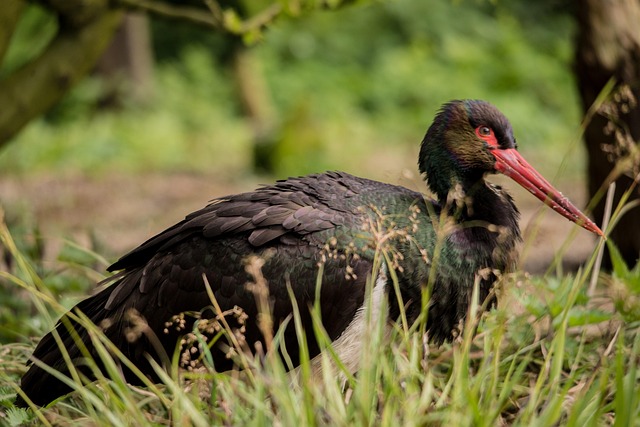Some birds are so tough to spot, and it’s not just bad luck—it’s their genius tricks and hidden hangouts. I’m diving into why these feathered ghosts are so hard to find, sharing my own jaw-dropping moments and tips to catch them in action. Trust me, once you know their secrets, you’ll be hooked on the chase.
Blending In Like Masters
I was floored when I learned about the Common Potoo in a nature doc. This South American bird looks like a tree stump, its gray-brown feathers melding with bark as it freezes on a branch. I’d walk right past one, thinking it’s just a snag, until its yellow eyes pop open at night.
Same goes for the American Bittern in my local marsh, standing tall like a reed, its stripes fooling everyone. Even its slow sway mimics the wind—pure camouflage magic.
The Tawny Frogmouth in Australia blew my mind, too. It perches like a broken branch, blending into eucalyptus trees. These birds are so tough to spot because their plumage is a perfect disguise, making me double-check every tree I pass.
Night Owls and Twilight Tricksters
I’ve spent evenings straining to hear the Eastern Whip-poor-will, its “whip-poor-will” chant haunting my woods at dusk. This nightjar’s speckled feathers hide it in leaf litter, and it only moves when the sun’s down, snagging moths with big eyes. I’d need a flashlight to spot one, and even then, it’s a long shot.
Then there’s the Oilbird, clicking through South American caves like a bat, finding fruit in pitch-black darkness. I saw a video of their cave colonies, and it’s wild—they’re untouchable without a guide.
The Black-crowned Night-Heron near my pond is just as sneaky, hunting fish at twilight, its gray body fading into shadows. These birds are so tough to spot because they love the dark, and I’m usually asleep when they’re out partying.
Hiding in the Middle of Nowhere
Some birds are so tough to spot because they live where I’d never go. The Snow Petrel nests on Antarctic cliffs, braving ice storms to eat krill. I’d need a polar expedition to see one. The Christmas Island Frigatebird sticks to a tiny Pacific island, puffing red throat balloons in mangroves. I’d have to sail far to catch that show.
The Kakapo, a chunky, flightless parrot, chills in New Zealand’s mossy forests, blending with ferns. With only a few left, protected on remote islands, they’re like birding’s holy grail. These far-flung homes make these birds so tough to spot, but I’m dreaming of the day I get close.
Sneaky Moves and Sparse Crowds
I’ve learned birds are so tough to spot when they act like spies. The Spruce Grouse in my nearby forest freezes among pines, its brown feathers invisible unless I hear its soft cluck. They spread out over huge territories, so I’m lucky to see one. The Crested Auklet in the Bering Sea only shows its funky orange crest in summer colonies, then vanishes to sea for months.
The Corncrake is my nemesis, skulking in tall grass, its “crex-crex” call mocking me from European meadows. These shy runners, not flyers, dodge me every time. Low numbers and sneaky habits make these birds so tough to spot, pushing my patience to the limit.
Here Today, Gone Tomorrow
Migration makes some birds so tough to spot. The Red-necked Phalarope spins in Arctic pools, then winters on tropical seas, only passing through my wetlands for a hot second. I’d need perfect timing to catch their dance. The Swinhoe’s Storm-Petrel lives over the Pacific, touching land only to breed on tiny islands. Good luck spotting that 8-inch speck in a storm.
The Black-and-white Warbler, with its striped suit, creeps along tree trunks in spring, but it’s a blink-and-miss-it visitor before heading to Central America. These globe-trotters keep birds so tough to spot by never staying put.
Humans Making It Harder
I hate to say it, but we’re part of why some birds are so tough to spot. Logging pushes Harpy Eagles into tiny Amazon forest patches, their huge nests high in trees I’ll never reach. Urban noise and lights scare Spotted Owls deeper into old forests, where I need permits to go. Rats on islands wipe out Fairy Tern nests, forcing them to remote atolls where their aerial fish-passing dances are out of my reach.
These human messes shrink habitats, making birds so tough to spot unless I’m in the right conservation zone.
My Tricks to Track Them Down
I’ve got tools to find birds so tough to spot. My 10×42 binoculars bring distant Harpy Eagles into focus. Merlin Bird ID cracks the Corncrake’s rasp from grass clumps, and eBird maps show me where phalaropes stop. For night birds like Whip-poor-wills, I use a recorder to catch their calls. Guided tours to Kakapo islands are on my bucket list.
Dawn marsh walks help me spot bitterns, and I’ve learned to move slow and quiet. These tricks turn the hunt for birds so tough to spot into a thrilling game.
Saving These Hidden Gems
I’m all in for saving birds so tough to spot. Reforestation helps potoos, cave protections keep Oilbirds safe, and rat-free islands give Kakapos a shot. I join bird counts to track Spotted Owls and push for wetlands to bring back bitterns. Every native plant I add to my yard helps local warblers.
These birds so tough to spot are worth the effort. Grab binoculars, listen for odd calls, and hunt for that flicker in the trees. You’ll be amazed at what’s hiding out there.
